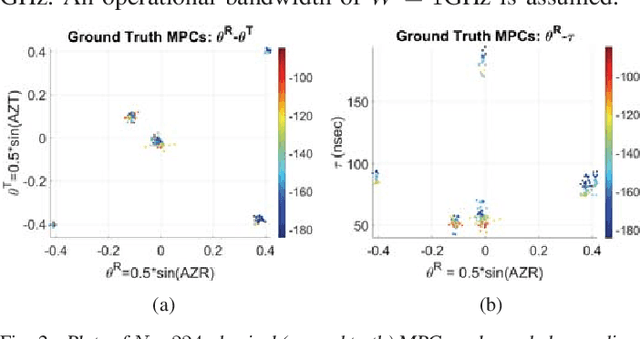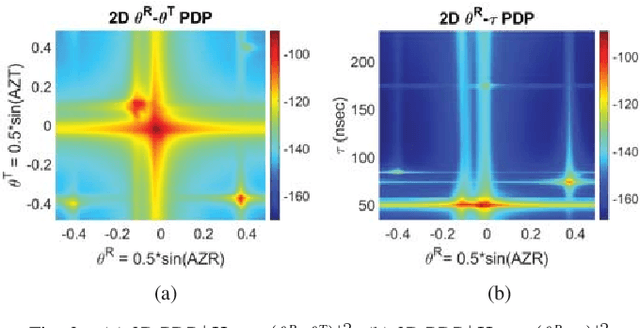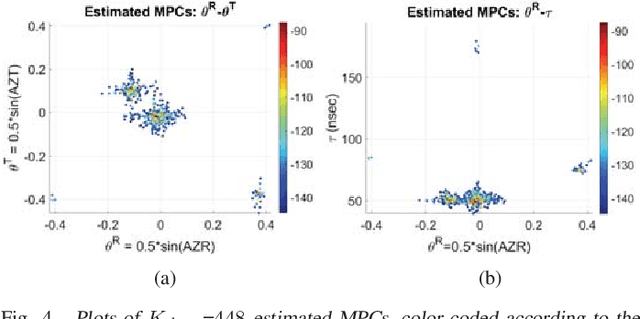Diego Dupleich
MDD-Enabled Two-Tier Terahertz Fronthaul in Indoor Industrial Cell-Free Massive MIMO
May 10, 2023Abstract:To make indoor industrial cell-free massive multiple-input multiple-output (CF-mMIMO) networks free from wired fronthaul, this paper studies a multicarrier-division duplex (MDD)-enabled two-tier terahertz (THz) fronthaul scheme. More specifically, two layers of fronthaul links rely on the mutually orthogonal subcarreir sets in the same THz band, while access links are implemented over sub-6G band. The proposed scheme leads to a complicated mixed-integer nonconvex optimization problem incorporating access point (AP) clustering, device selection, the assignment of subcarrier sets between two fronthaul links and the resource allocation at both the central processing unit (CPU) and APs. In order to address the formulated problem, we first resort to the low-complexity but efficient heuristic methods thereby relaxing the binary variables. Then, the overall end-to-end rate is obtained by iteratively optimizing the assignment of subcarrier sets and the number of AP clusters. Furthermore, an advanced MDD frame structure consisting of three parallel data streams is tailored for the proposed scheme. Simulation results demonstrate the effectiveness of the proposed dynamic AP clustering approach in dealing with the varying sizes of networks. Moreover, benefiting from the well-designed frame structure, MDD is capable of outperforming TDD in the two-tier fronthaul networks. Additionally, the effect of the THz bandwidth on system performance is analyzed, and it is shown that with sufficient frequency resources, our proposed two-tier fully-wireless fronthaul scheme can achieve a comparable performance to the fiber-optic based systems. Finally, the superiority of the proposed MDD-enabled fronthaul scheme is verified in a practical scenario with realistic ray-tracing simulations.
A Framework for Developing Algorithms for Estimating Propagation Parameters from Measurements
Sep 13, 2021



Abstract:A framework is proposed for developing and evaluating algorithms for extracting multipath propagation components (MPCs) from measurements collected by sounders at millimeter-wave (mmW) frequencies. To focus on algorithmic performance, an idealized model is proposed for the spatial frequency response of the propagation environment measured by a sounder. The input to the sounder model is a pre-determined set of MPC parameters that serve as the "ground truth." A three-dimensional angle-delay (beamspace) representation of the measured spatial frequency response serves as a natural domain for implementing and analyzing MPC extraction algorithms. Metrics for quantifying the error in estimated MPC parameters are introduced. Initial results are presented for a greedy matching pursuit algorithm that performs a least-squares (LS) reconstruction of the MPC path gains within the iterations. The results indicate that the simple greedy-LS algorithm has the ability to extract MPCs over a large dynamic range, and suggest several avenues for further performance improvement through extensions of the greedy-LS algorithm as well as by incorporating features of other algorithms, such as SAGE and RIMAX.
 Add to Chrome
Add to Chrome Add to Firefox
Add to Firefox Add to Edge
Add to Edge